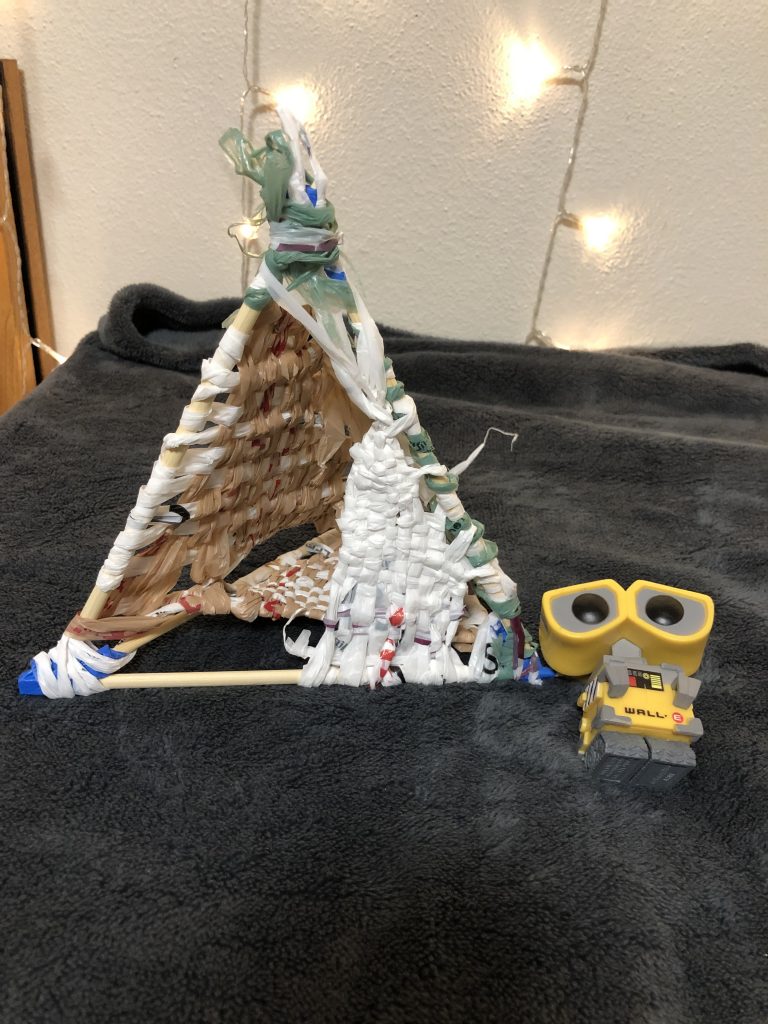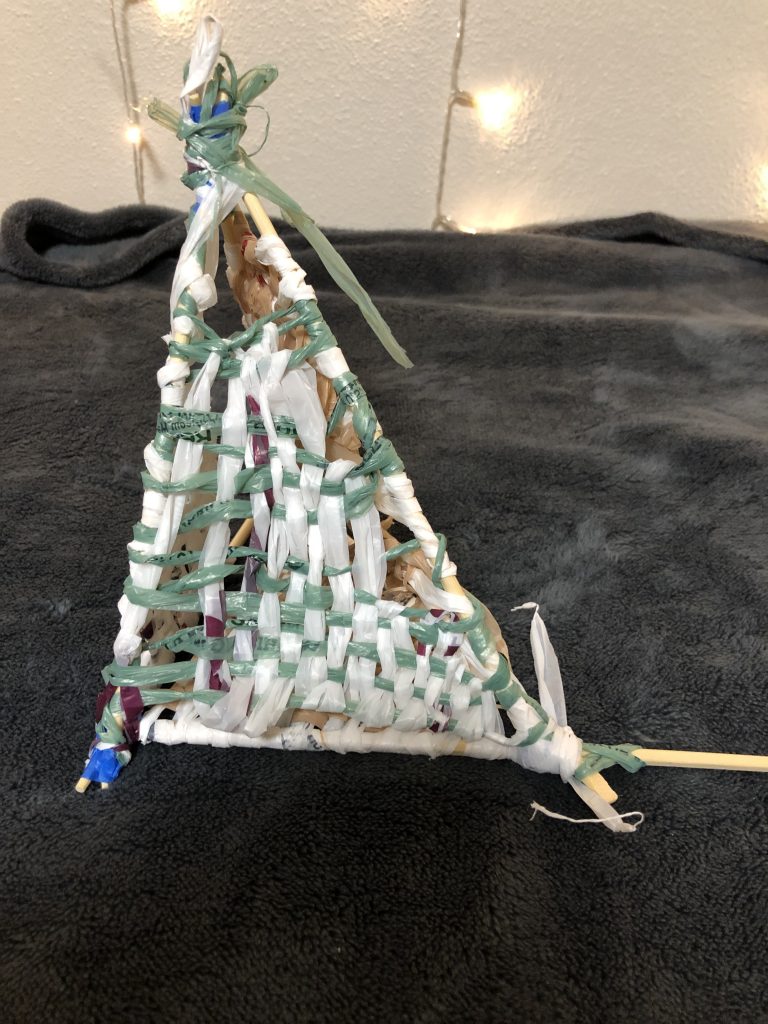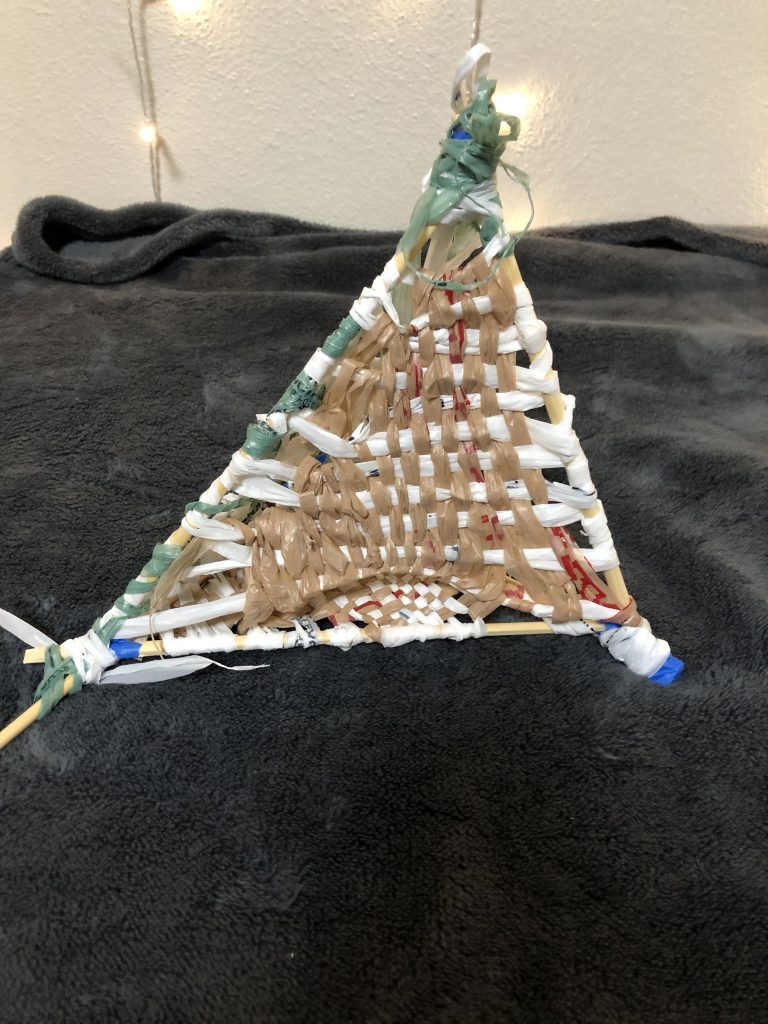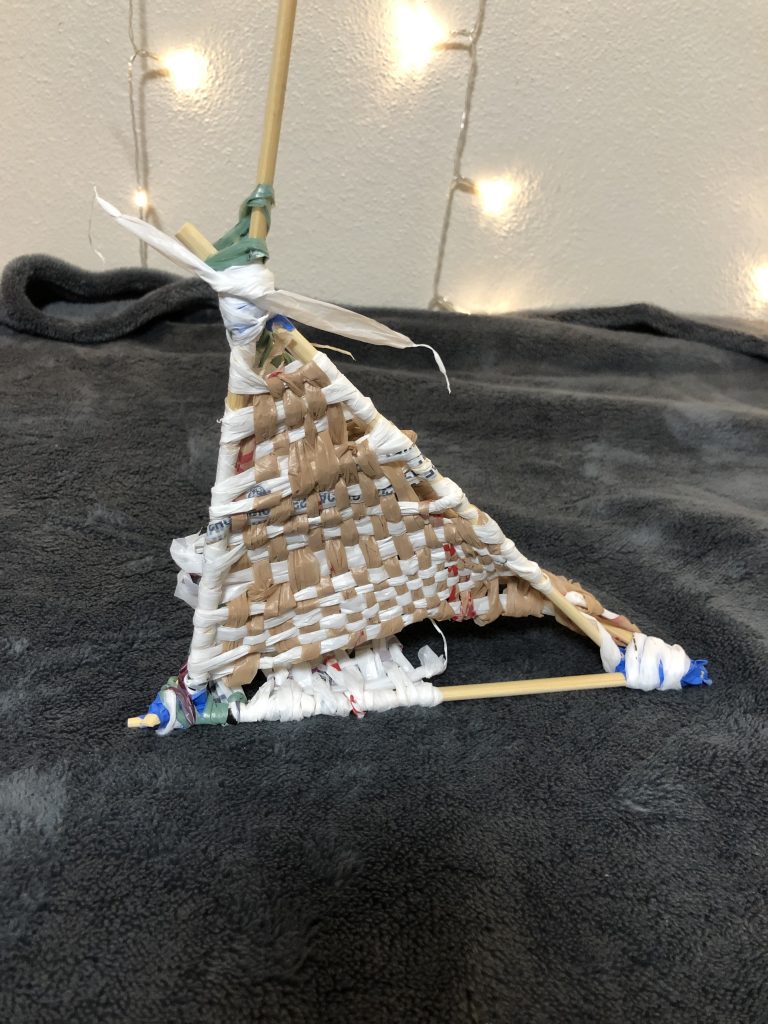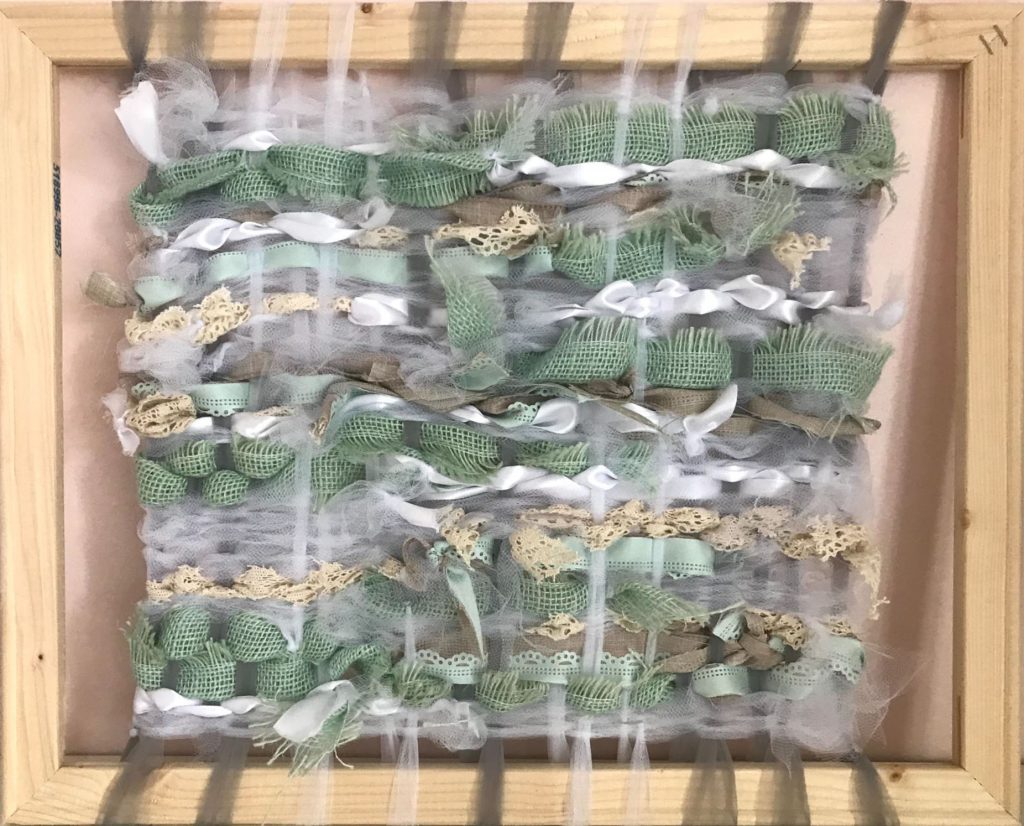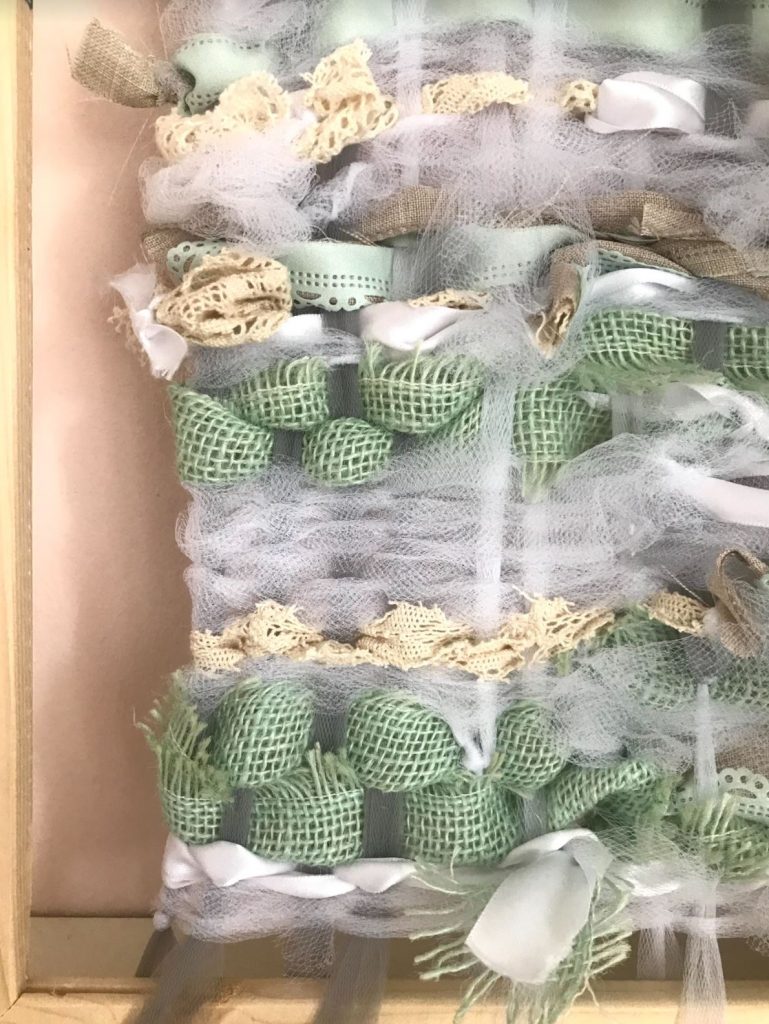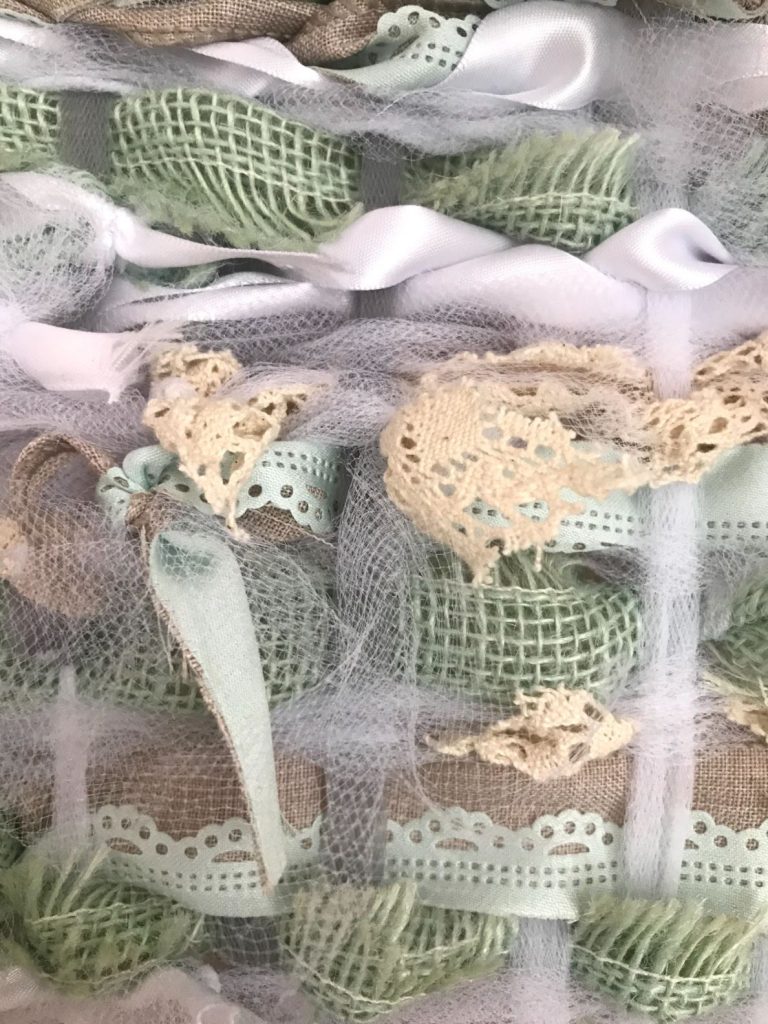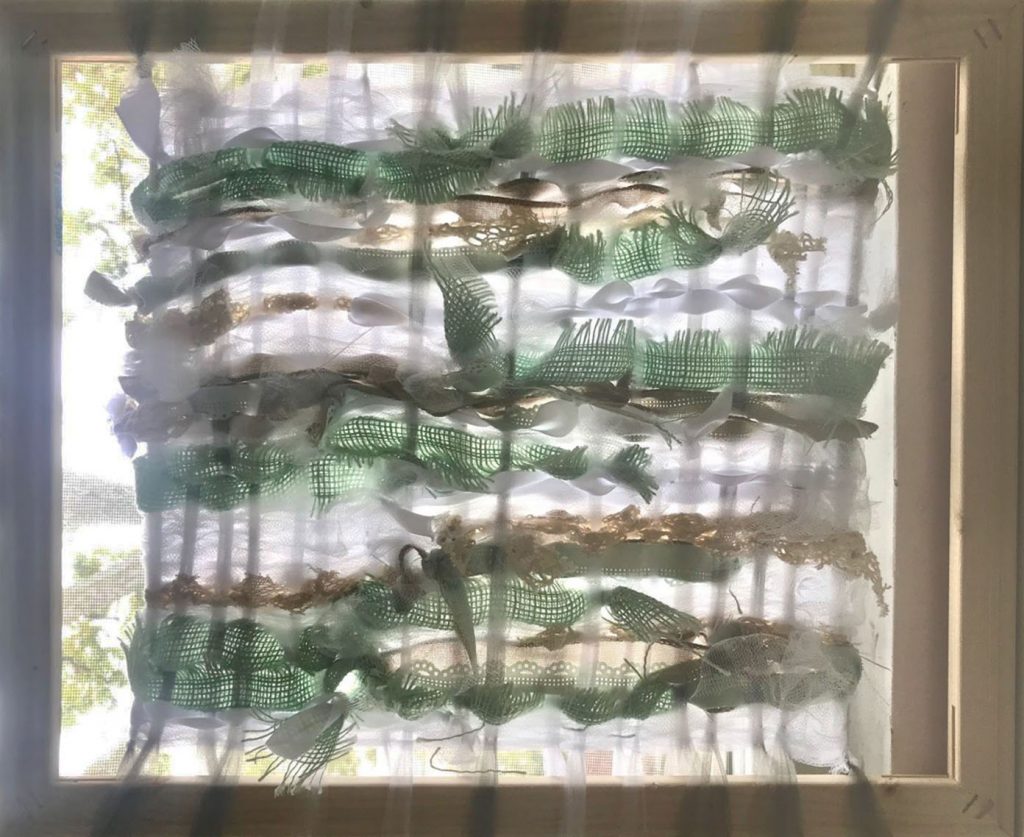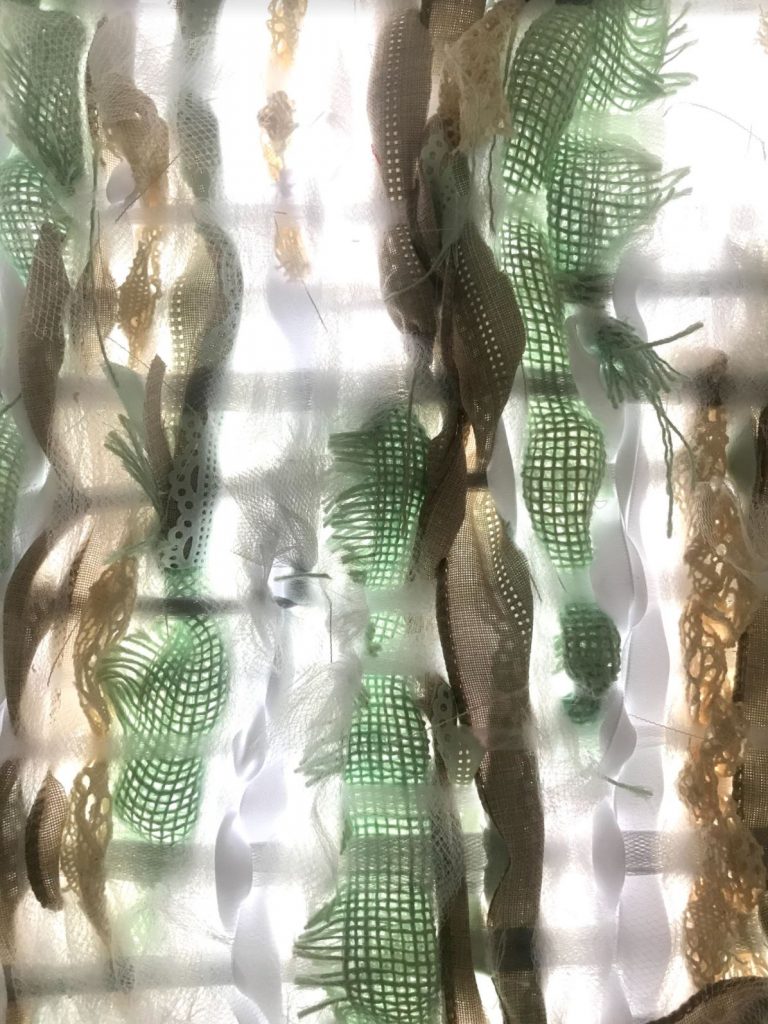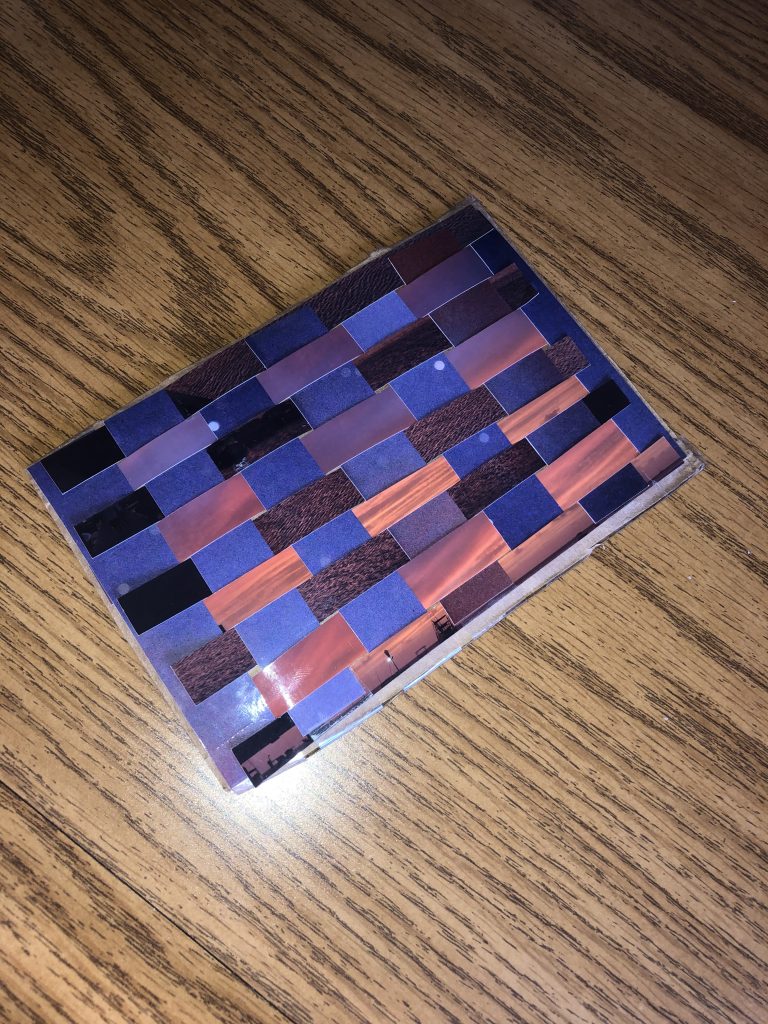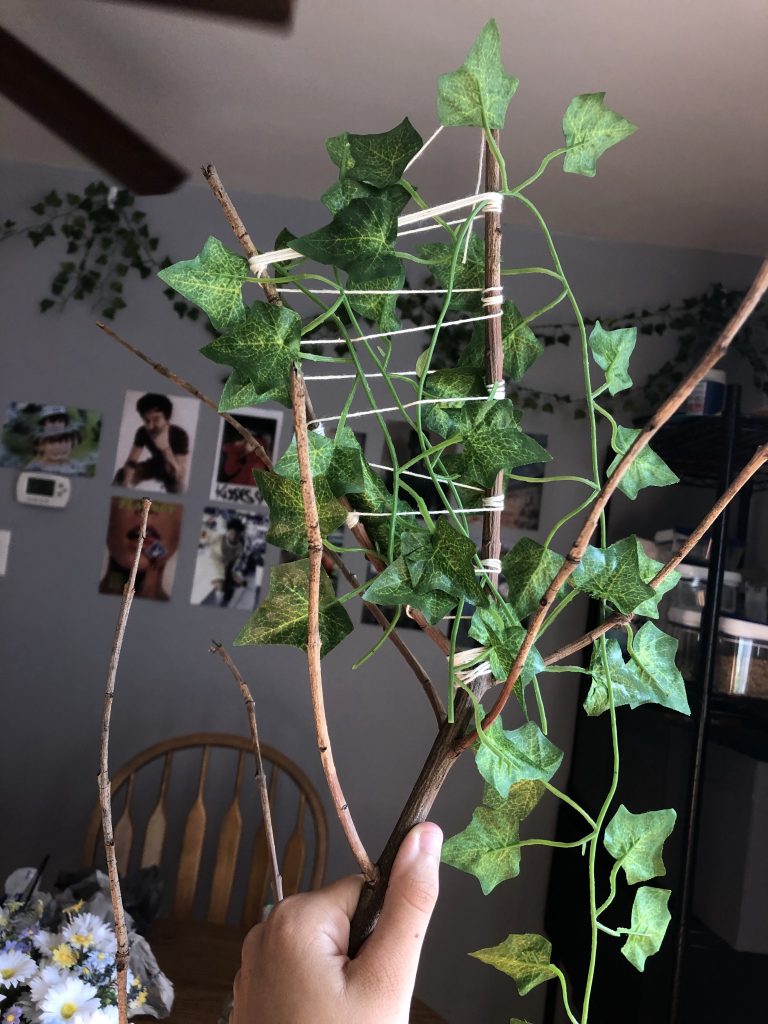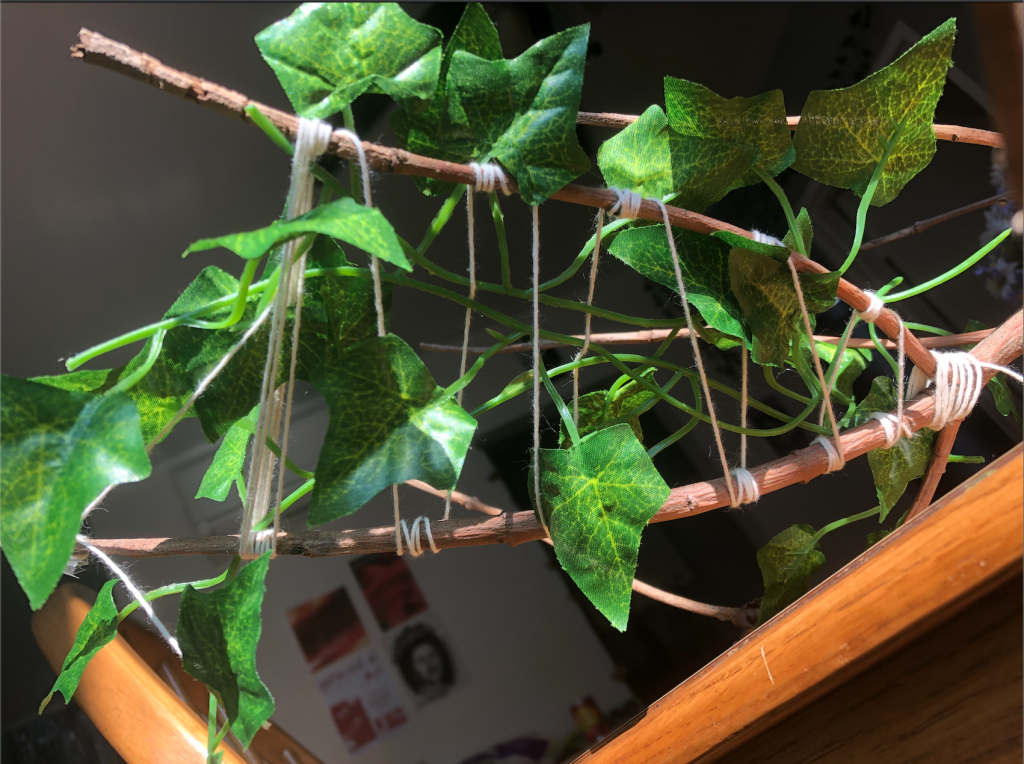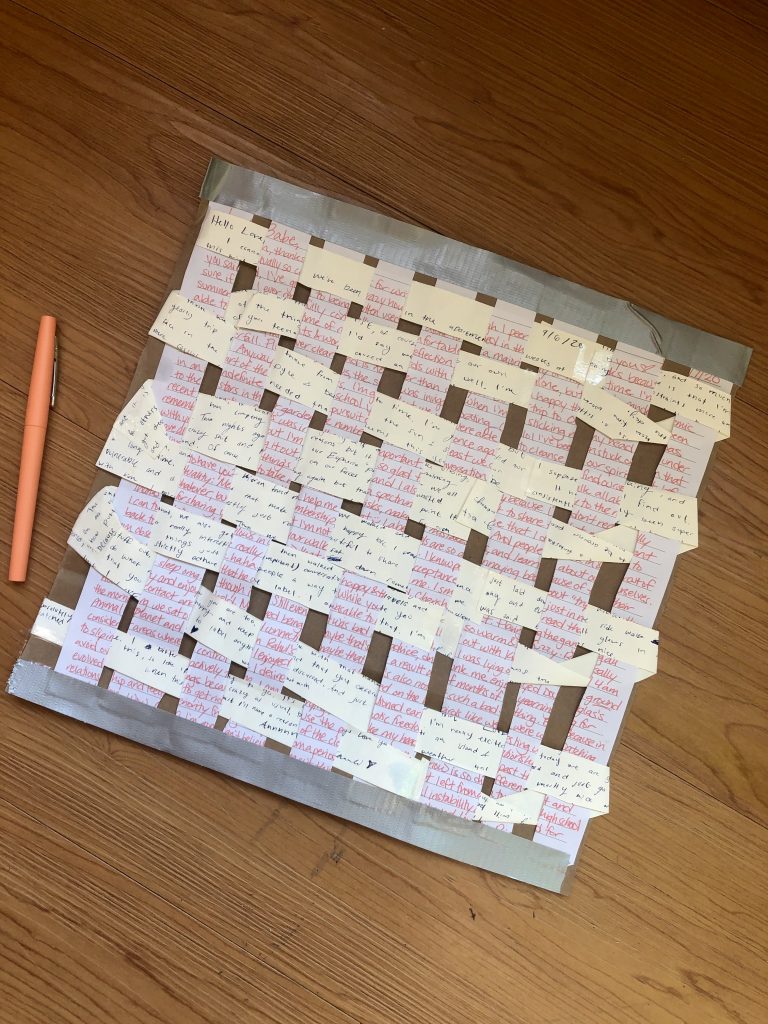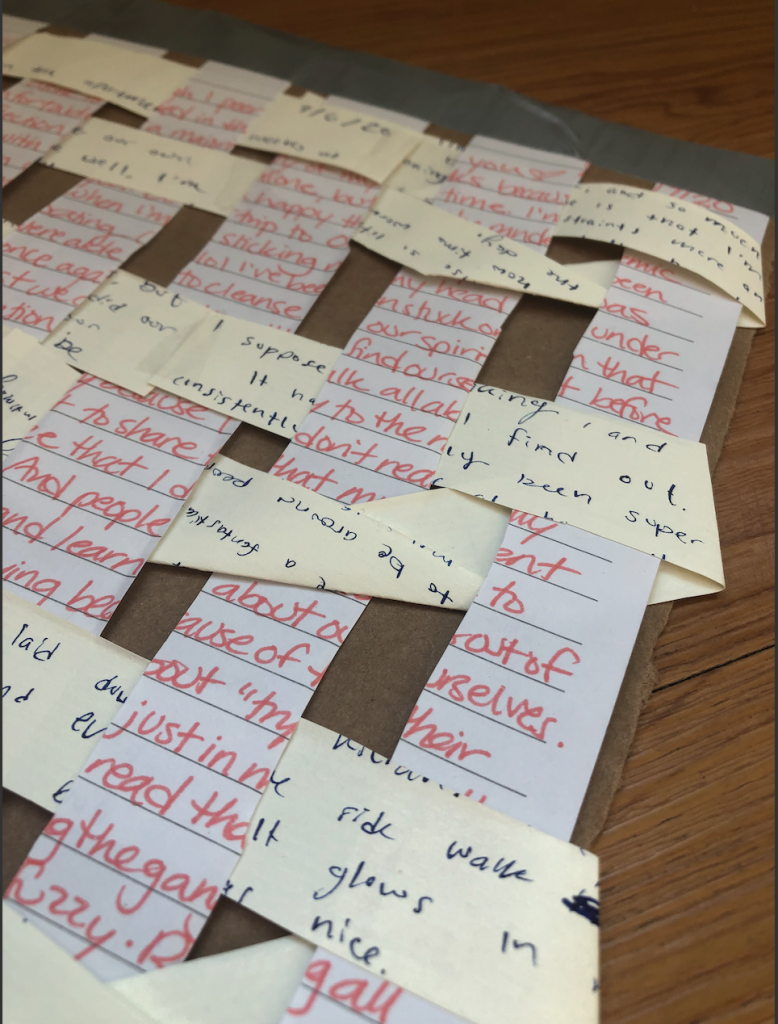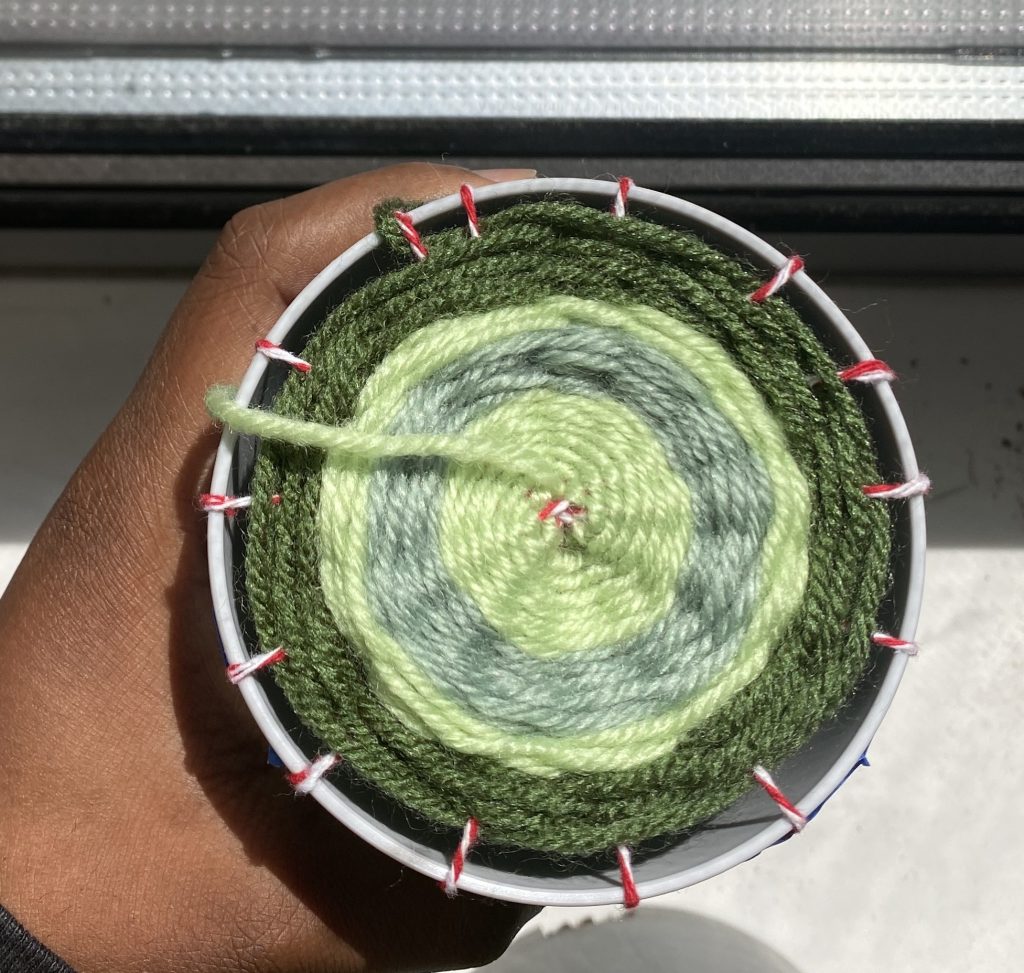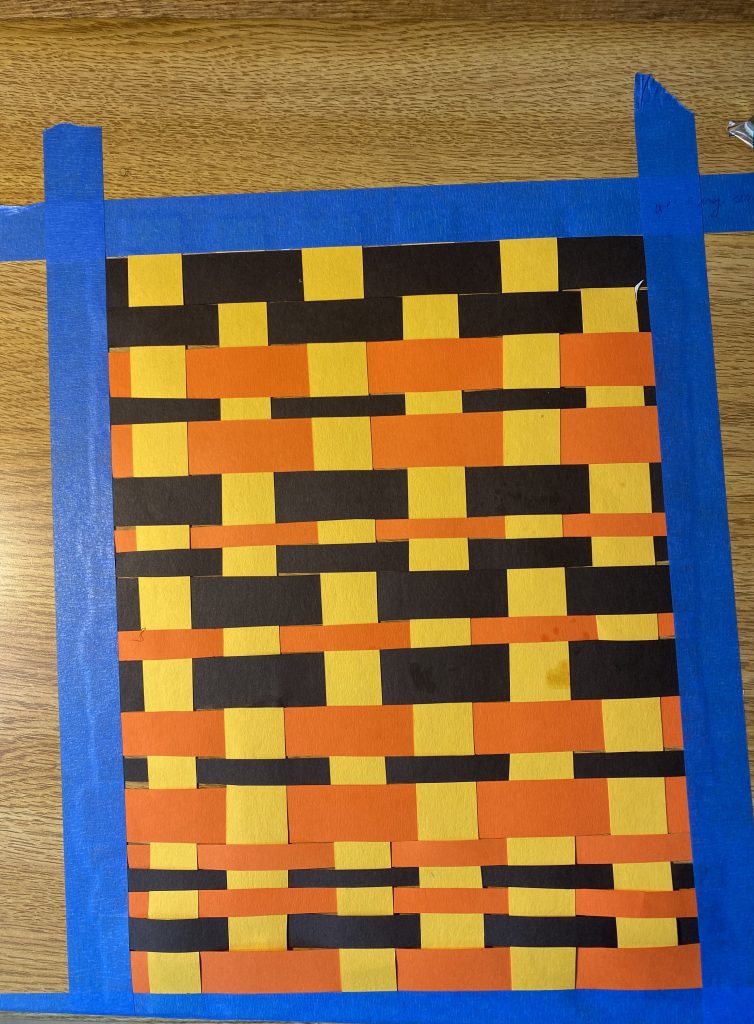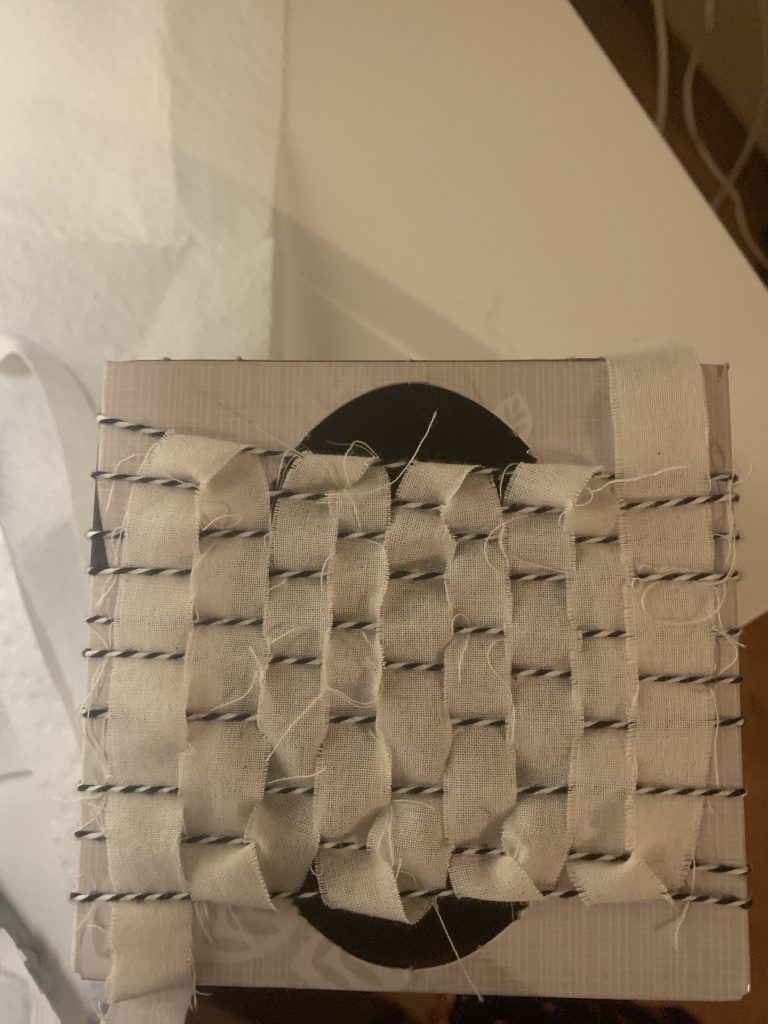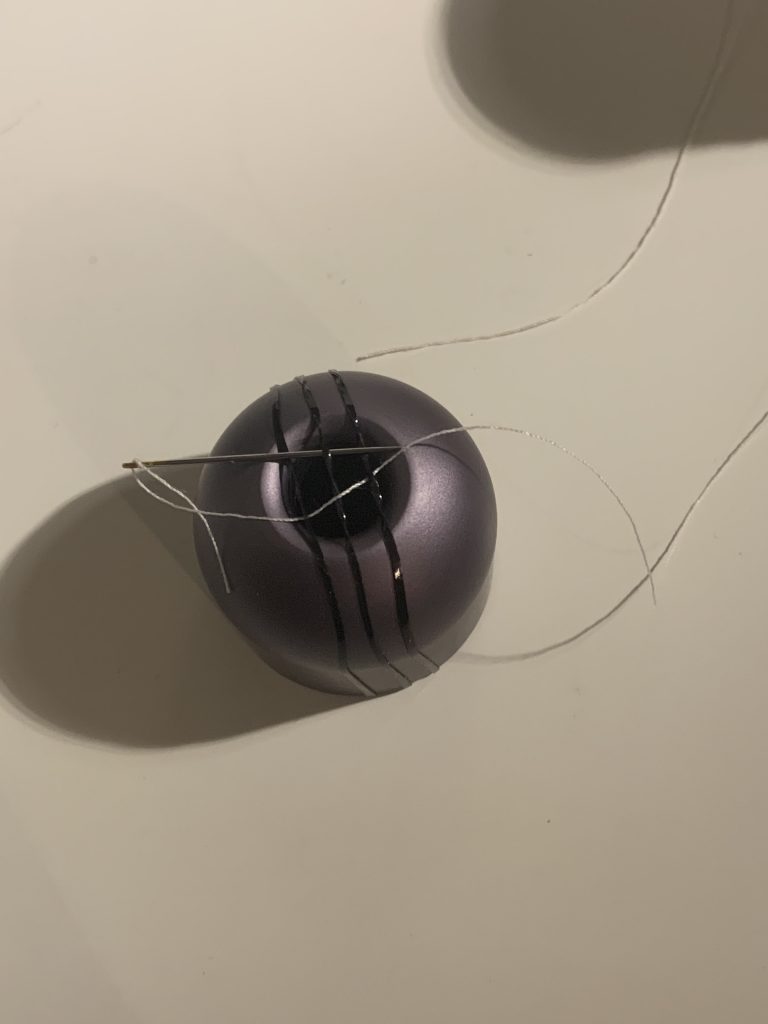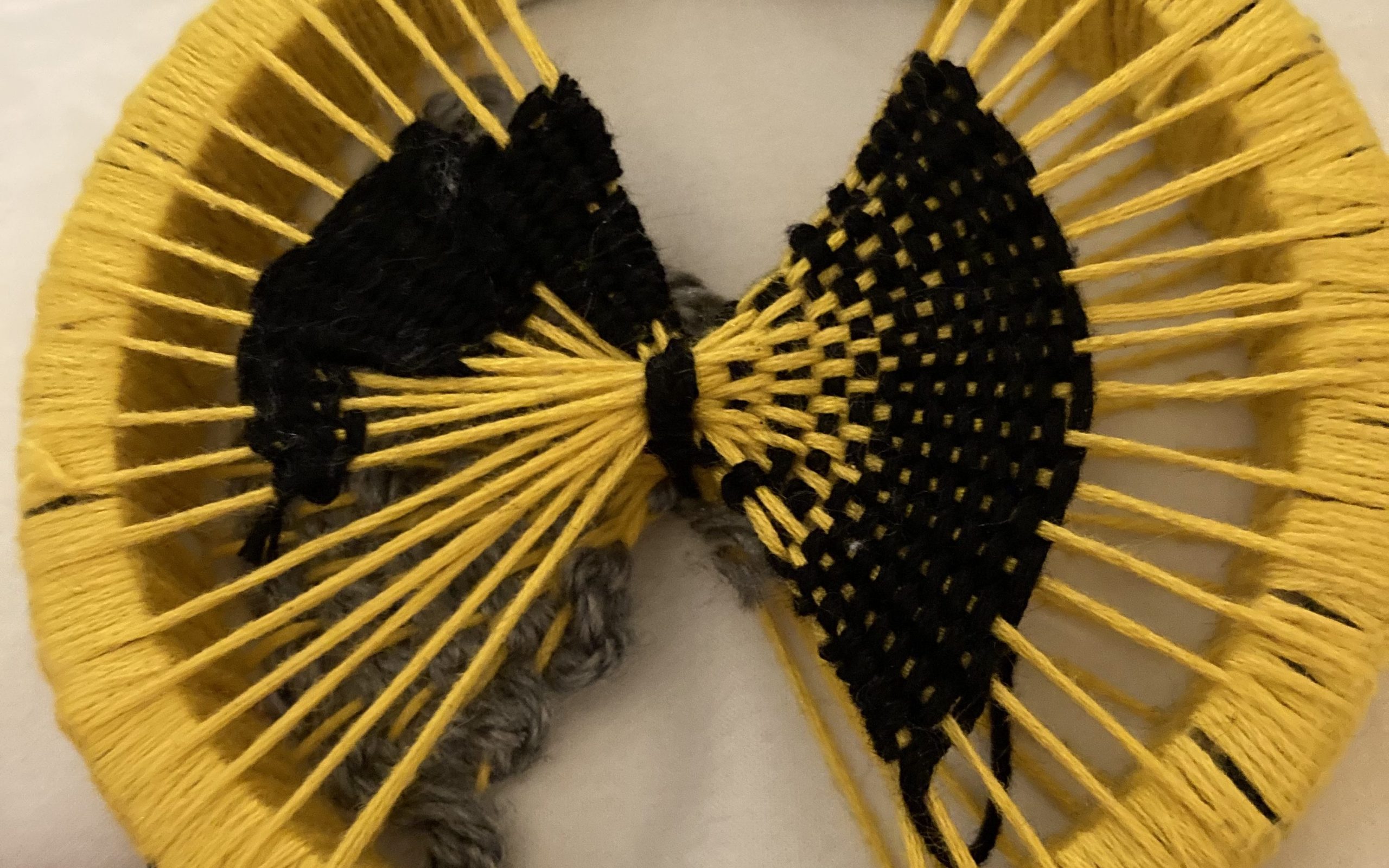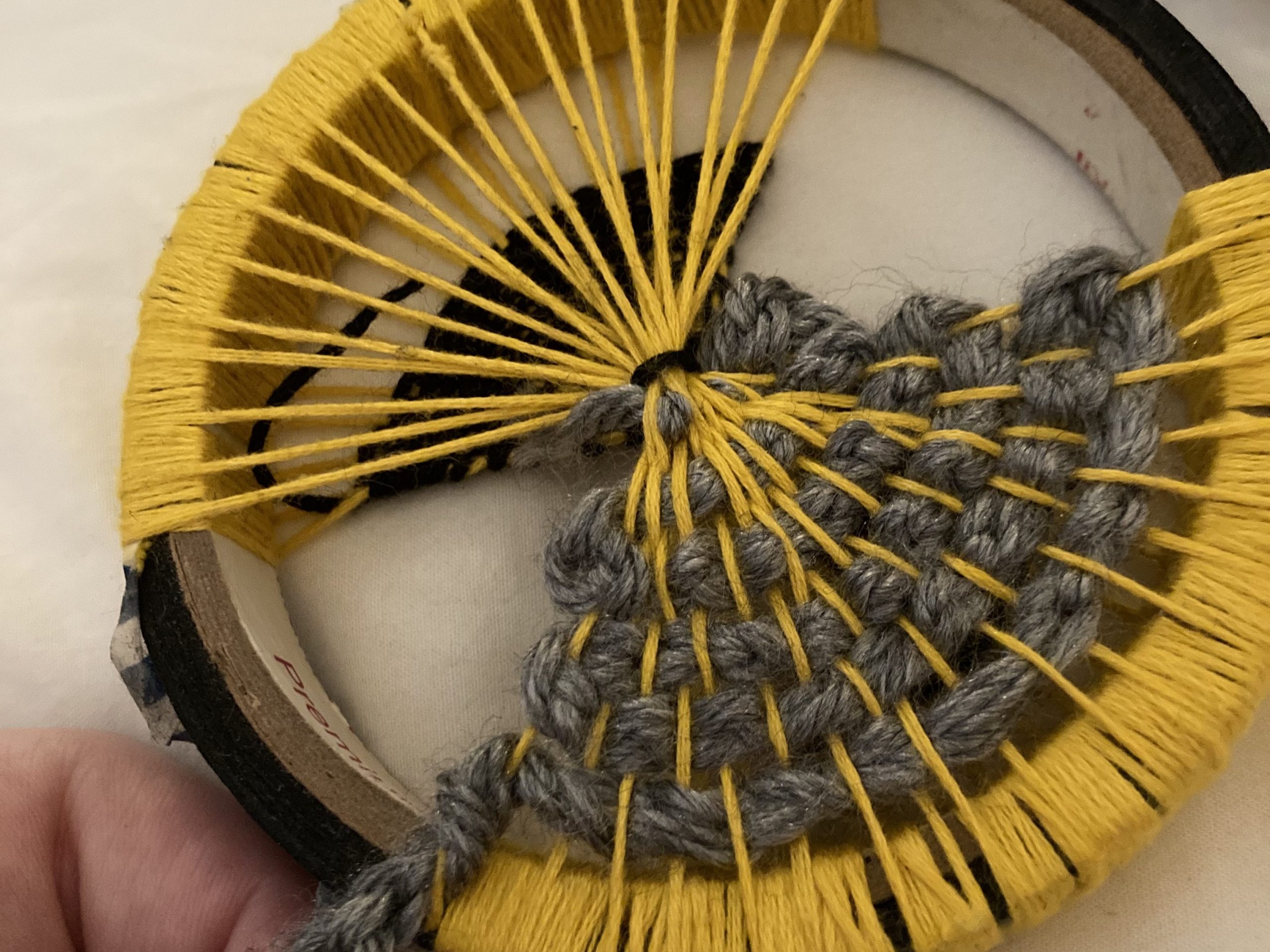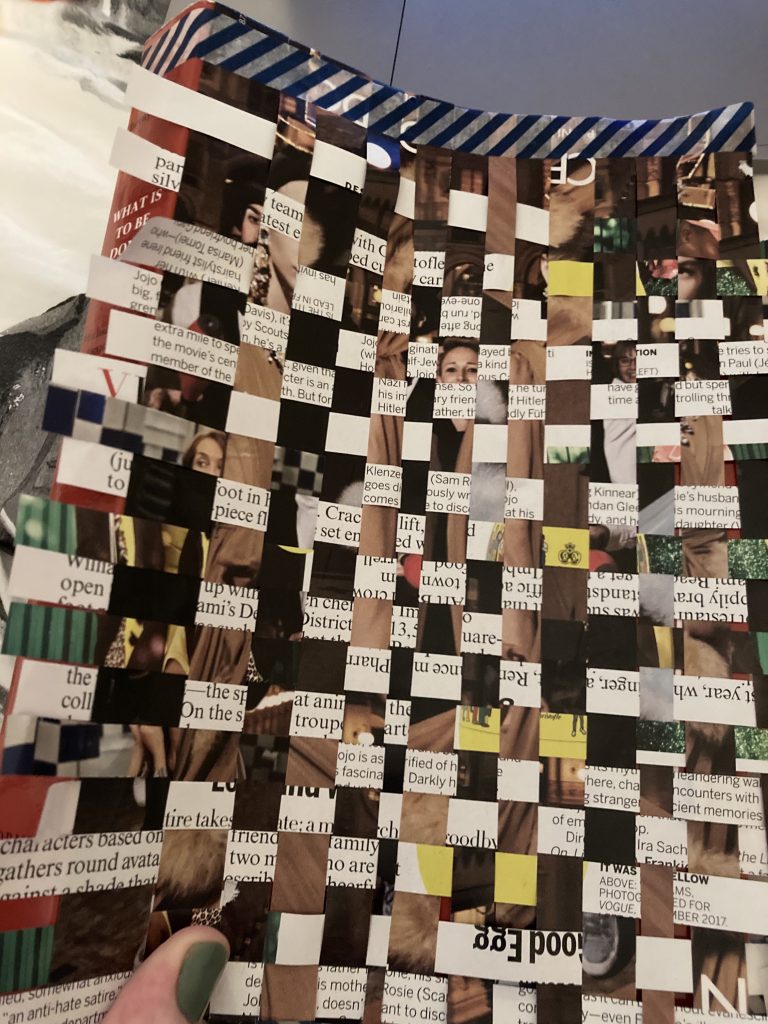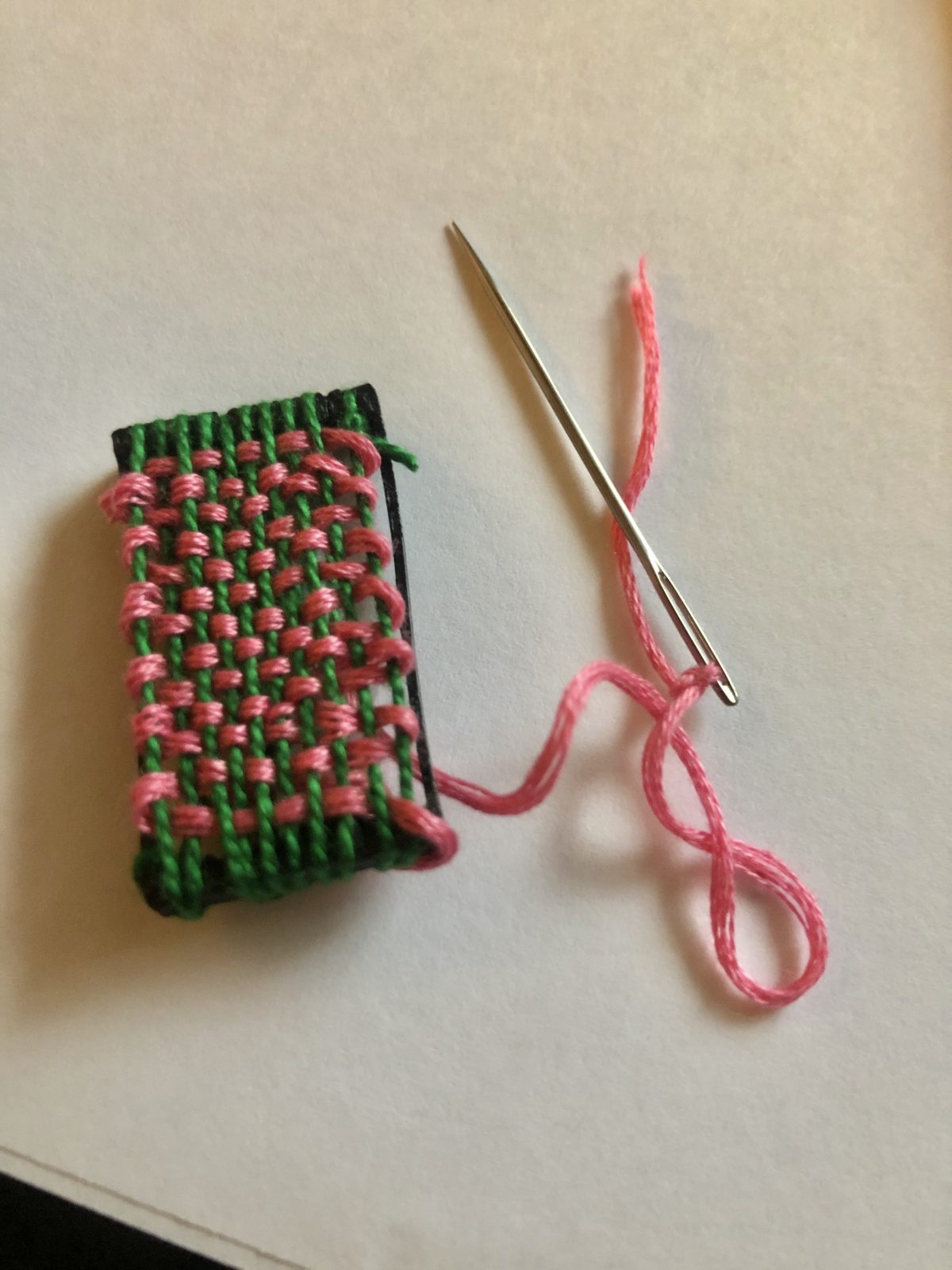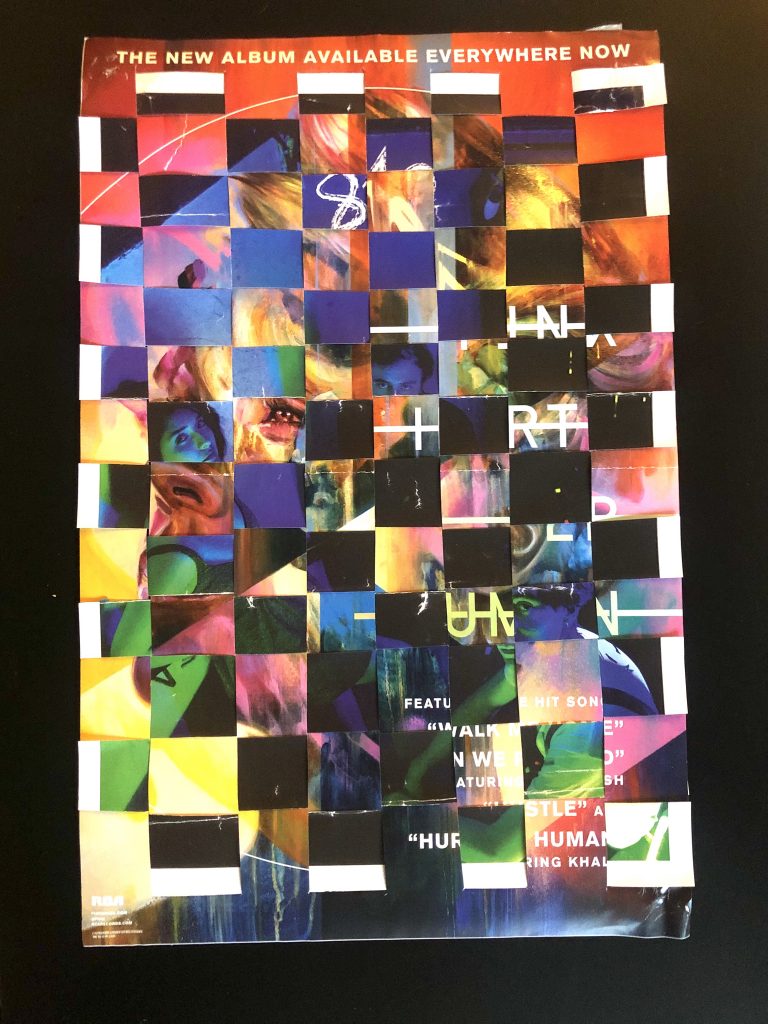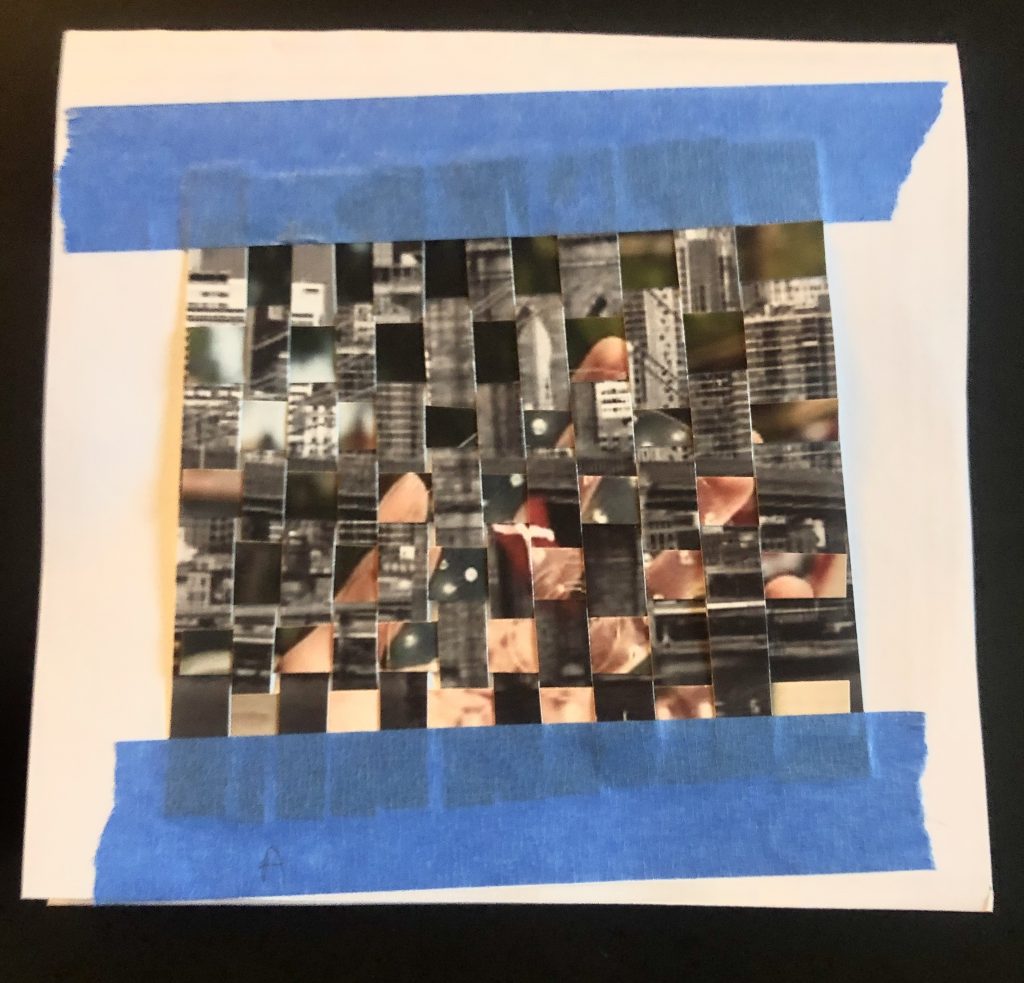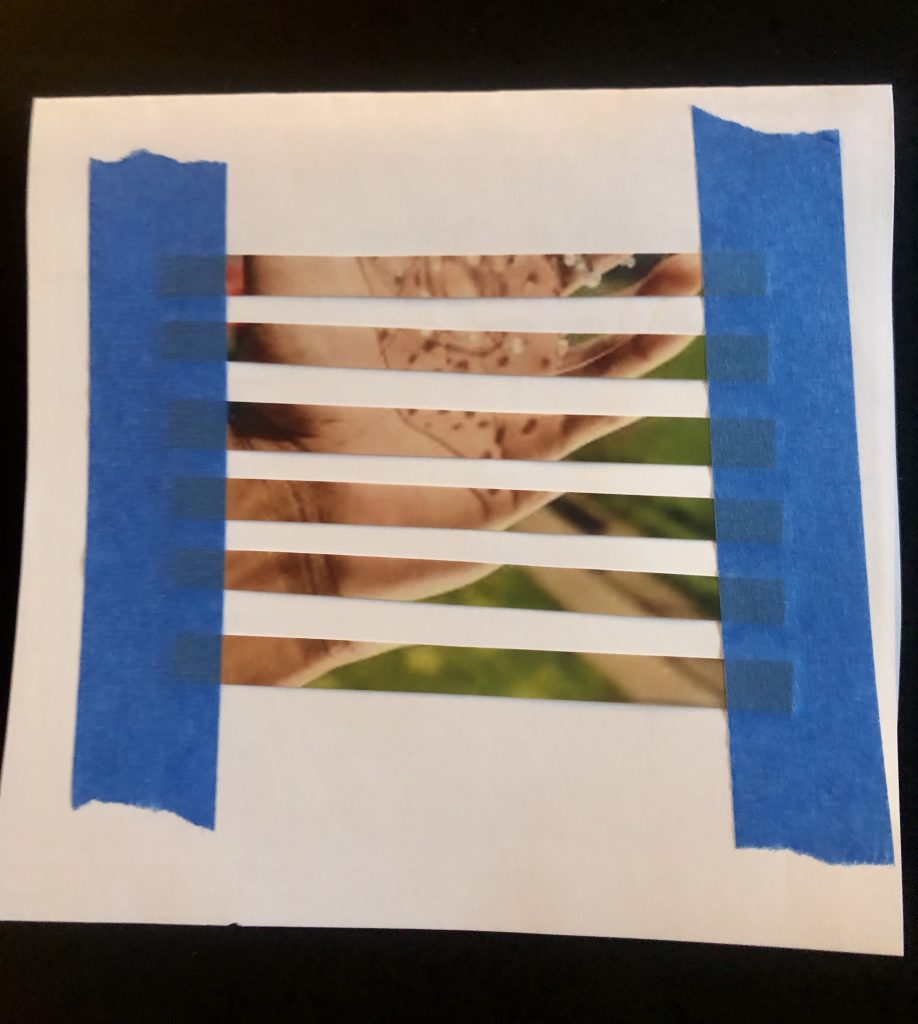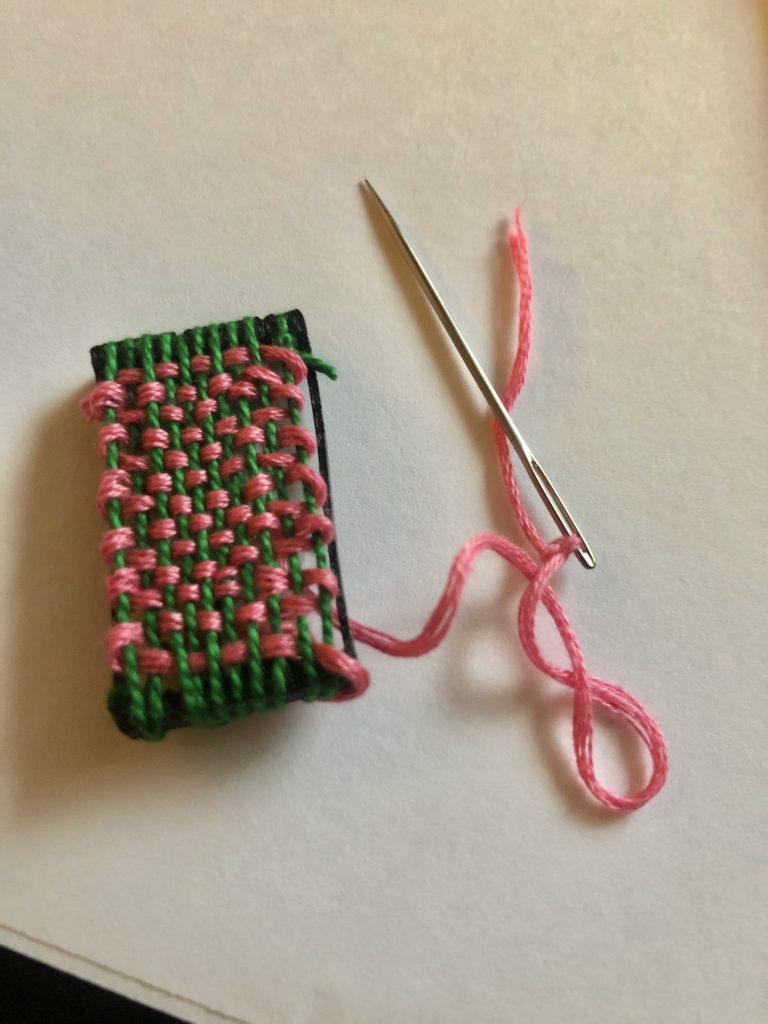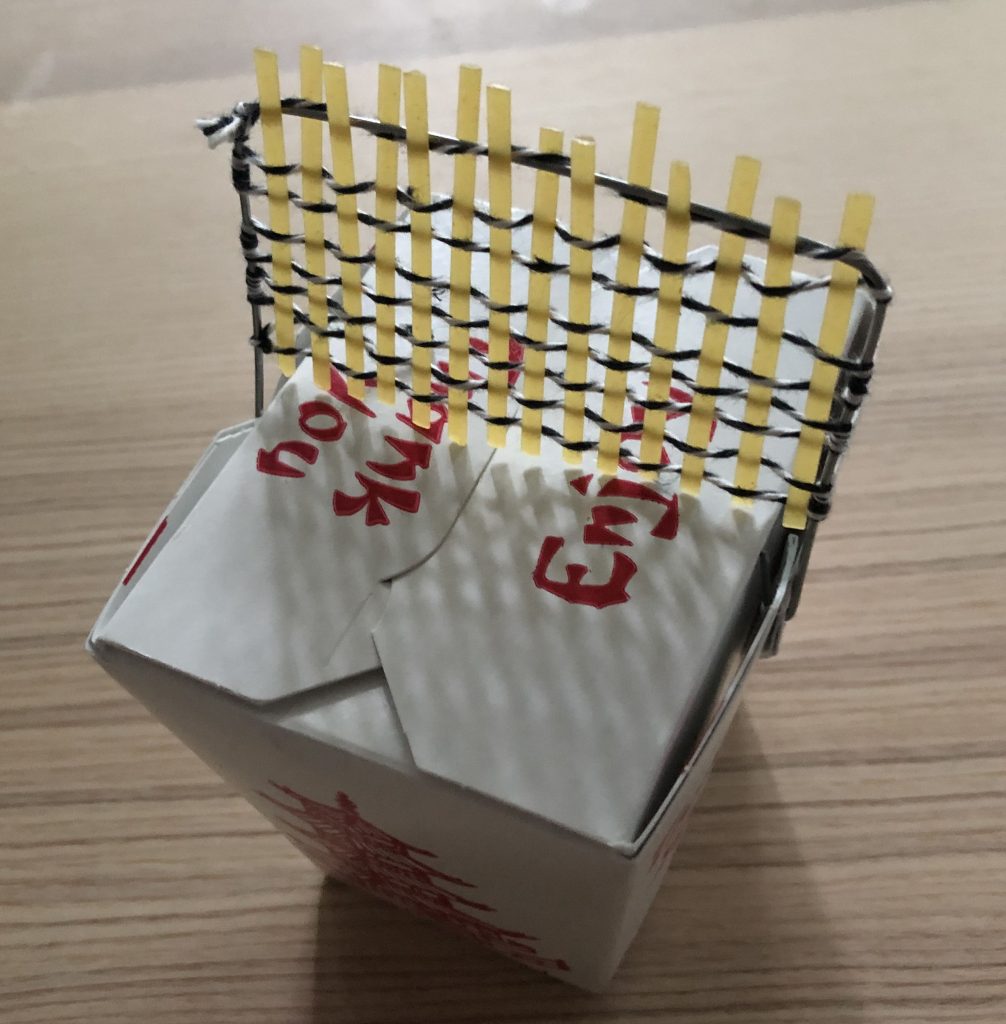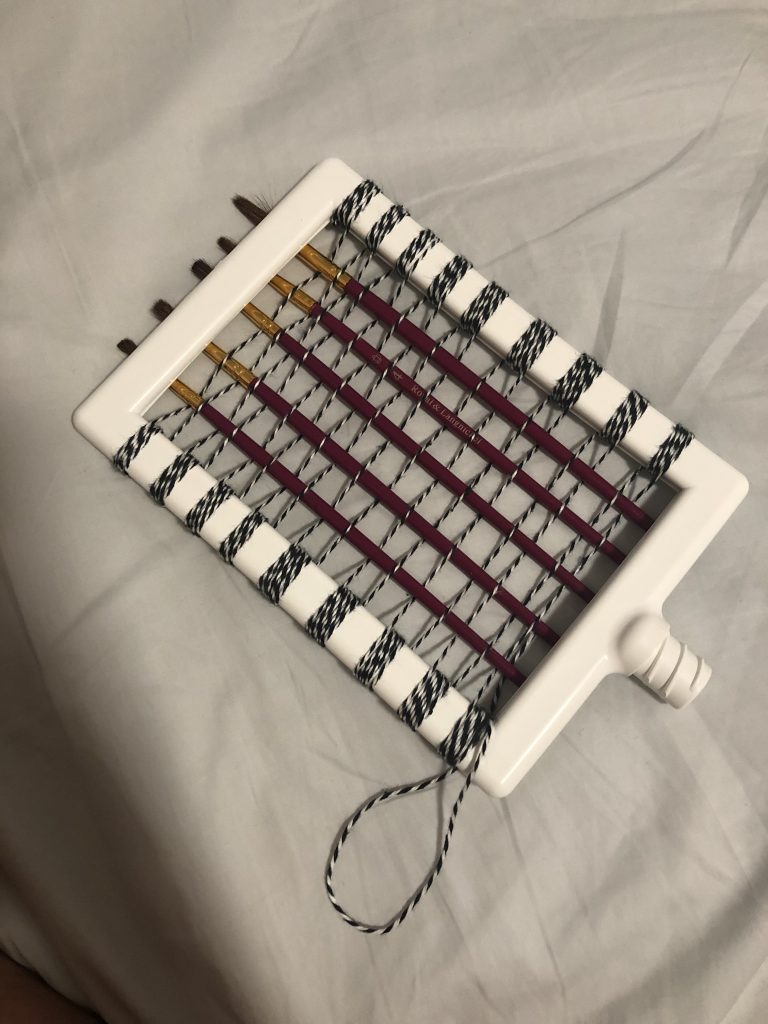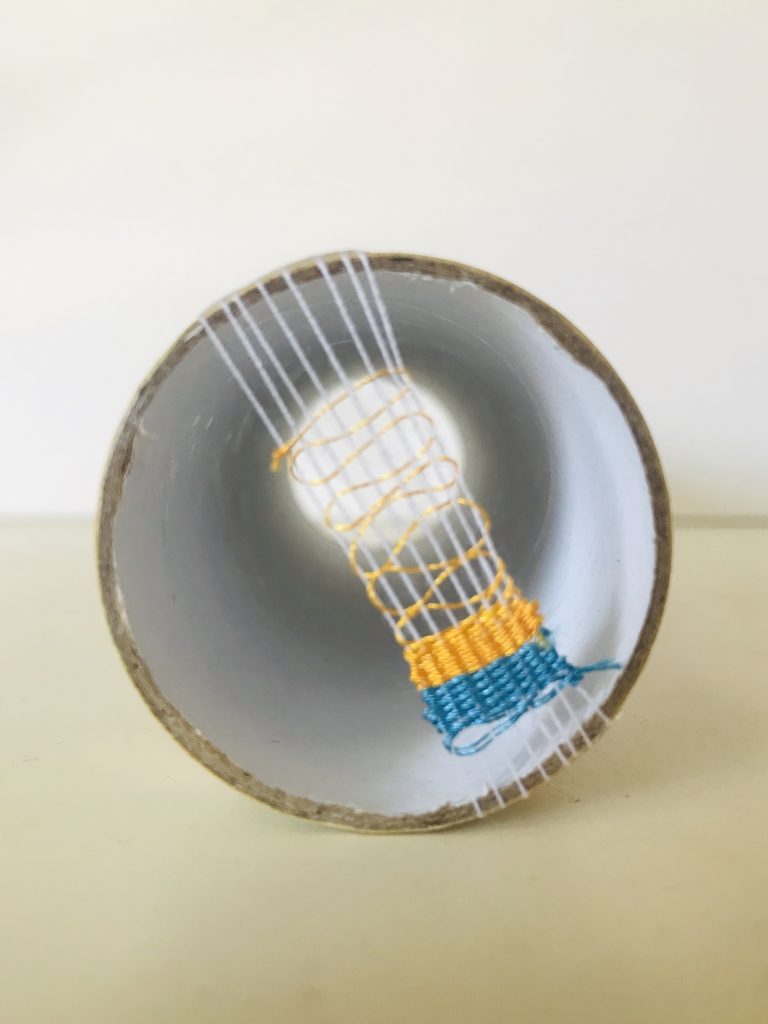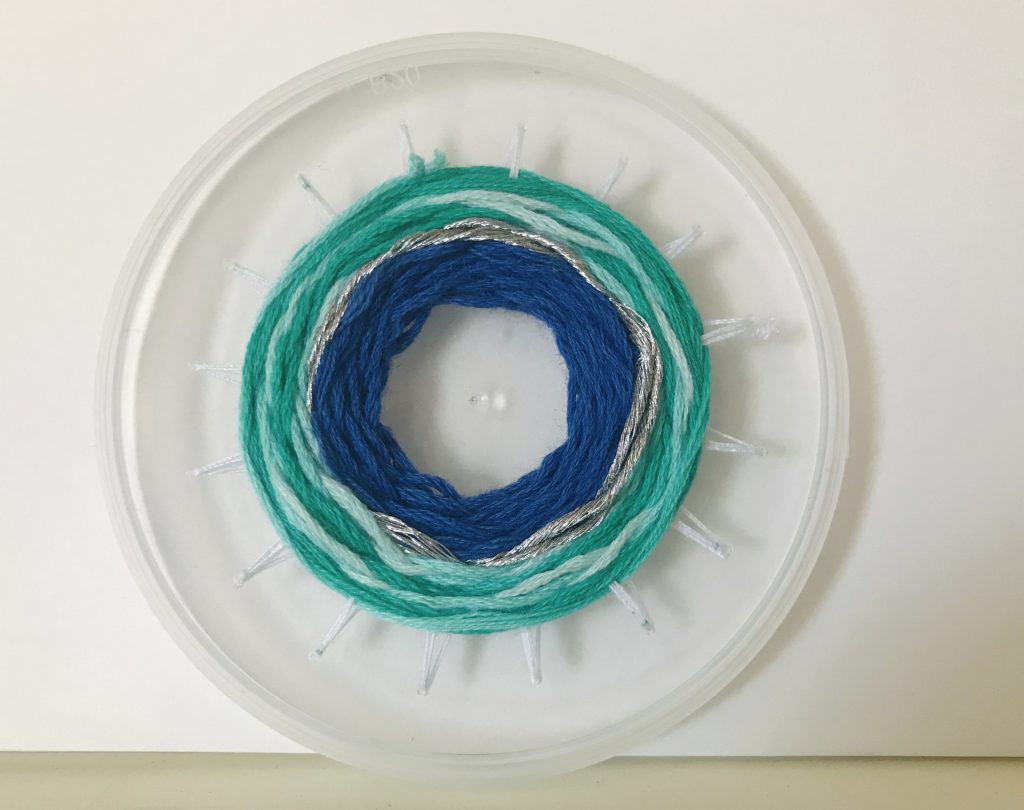For the Deeper Dive assignment, I decided to go for 3 medium sized weaves. They all use found materials that respond to a greater motif of reuse of common or unwanted materials to make something beautiful.
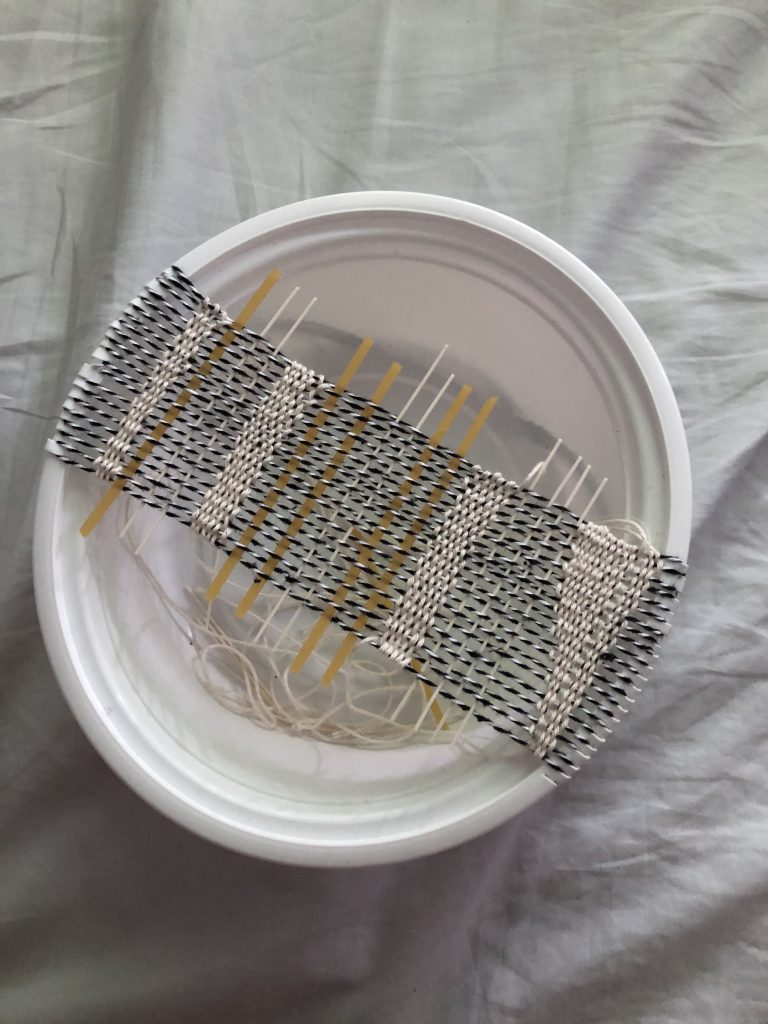
This first one is about noodles- the loom is an old plastic take out container that I grabbed out of our recycling pile. I chose baker’s twine as the warp, which I had trouble with trying to stay because of the slippery nature of the plastic container. So I made little incisions on the container for the warp to stay in, every 1/4″. For the weft, I used uncooked somen noodles, a string that was the same color, and uncooked linguine pasta. I wanted it to look like I used both uncooked and cooked noodles, but through string. I also tried to weave a more triangular shape instead of always weaving completely across.

This second weave is about using old unwanted materials. The loom is an old egg carton I grabbed from my house’s recycling pile, and I cut into it to keep the warp in place. The warp is fishing wire I had from an old project, and it is supposed to be reminiscent of plastic recycling. As for the warp, I used dried flowers, something that people pick as beautiful but in turn kills the flowers and they eventually wilt and dry, and you throw them out, as well as weeds I found outside, and off-white string. But I wanted to show how you can make something beautiful out of things whose functions you no longer have a need for.

For my last weave, I used a medical theme. The box itself is the container for my first aid kit, which usually holds bandages and ointments, I am using as the loom. I used red string as the warp, red usually being the color of emergency or first aid. For the weft, I pulled the ear loops off of a used disposable face mask, and then also cut it up into strips. In addition, I also used cotton swabs, which is used for aid.
In general, I tried to use a mix of soft and hard materials as warps in all of the weaves. In previous explorations, I noticed that hard materials leave a large spacing in between each warp, so I mixed in the soft materials between them to keep the gaps from being too big. I was pretty happy with how they turned out in the end, including the color schemes that came out of it!

